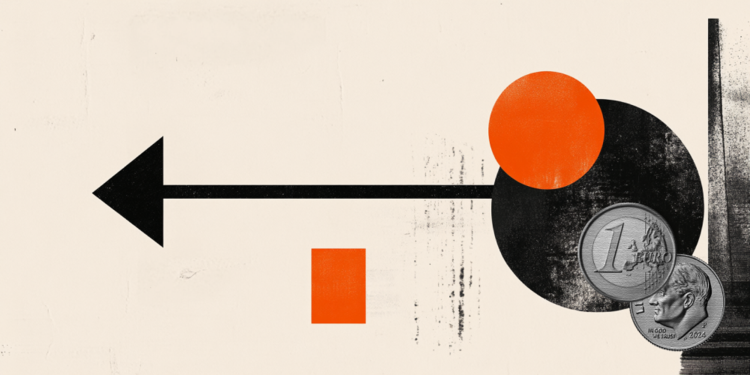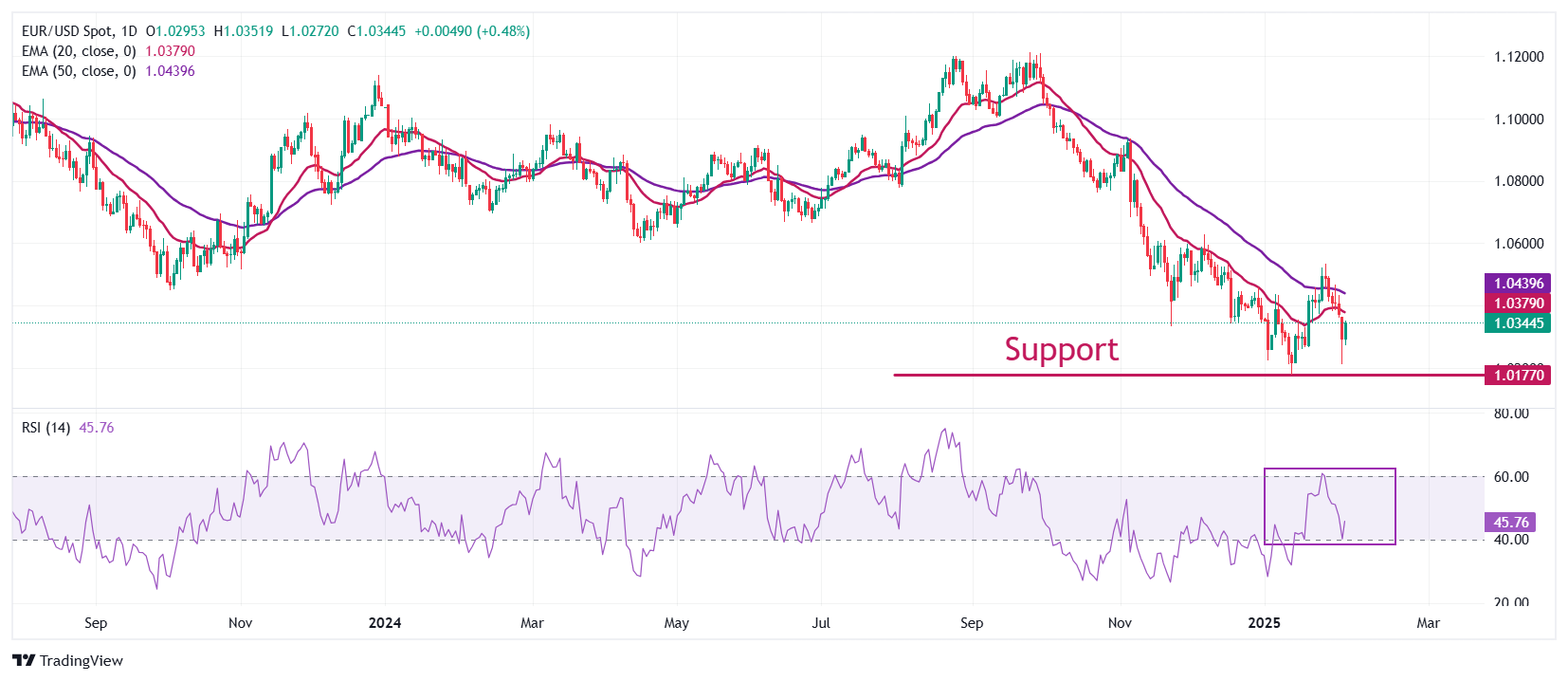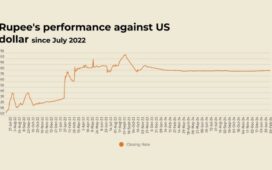- EUR/USD rebounds sharply to near 1.0350 as US President Trump postpones his orders of tariffs on Canada and Mexico for 30 days.
- Trump’s intentions to impose tariffs on China remain intact.
- The ECB is expected to cut interest rates three times more this year.
EUR/USD bounces back from the intraday low of 1.0270 and rebounds to near 1.0350 in Tuesday’s North American session. The major currency pair finds buyers’ demand as United States (US) President Donald Trump’s decision to postpone tariffs on Canada and Mexico has diminished the safe-haven appeal of the US Dollar (USD).
The US Dollar Index (DXY), which tracks the Greenback’s value against six major currencies, surrenders its intraday gains and trades at 108.44 at the time of writing, right on track to Monday’s low of 108.40.
US President Trump suspended tariff imposition on his North American partners after they agreed to cooperate to stop the flow of fentanyl. On the other hand, the president’s proposal of imposing 10% tariffs on China is still on the table, and moreover, he has even proposed to go further. “China hopefully is going to stop sending us fentanyl, and if they’re not, the tariffs are going to go substantially higher,” Trump said.
Meanwhile, China has delivered a swift response to Trump’s tariffs with higher levies of 15% on Coal and Liquified Natural Gas (LNG), and 10% for Crude Oil, farm equipment, and some autos.
Such a scenario indicates that the trade war will not go global and will remain majorly between the US and China, which has weighed on demand for safe-haven assets.
On the economic front, the US Dollar will be guided by a slew of labor market-related economic indicators this week, such as JOLTS Job Openings, ADP Employment Change and Nonfarm Payrolls (NFP) data, and the US ISM Services PMI figures.
The labor market data will influence market speculation for the Federal Reserve’s (Fed) monetary policy outlook for the entire year. Currently, the Fed is in a waiting mode in interest rates until it sees any “real progress in inflation or at least some weakness in the labor market”.
US Dollar PRICE Today
The table below shows the percentage change of US Dollar (USD) against listed major currencies today. US Dollar was the strongest against the Japanese Yen.
| USD | EUR | GBP | JPY | CAD | AUD | NZD | CHF | |
|---|---|---|---|---|---|---|---|---|
| USD | -0.49% | -0.24% | 0.36% | -1.25% | -0.53% | -0.40% | -0.47% | |
| EUR | 0.49% | 0.25% | 0.85% | -0.77% | -0.04% | 0.09% | 0.01% | |
| GBP | 0.24% | -0.25% | 0.58% | -1.02% | -0.29% | -0.16% | -0.23% | |
| JPY | -0.36% | -0.85% | -0.58% | -1.59% | -0.87% | -0.75% | -0.81% | |
| CAD | 1.25% | 0.77% | 1.02% | 1.59% | 0.73% | 0.86% | 0.81% | |
| AUD | 0.53% | 0.04% | 0.29% | 0.87% | -0.73% | 0.13% | 0.09% | |
| NZD | 0.40% | -0.09% | 0.16% | 0.75% | -0.86% | -0.13% | -0.07% | |
| CHF | 0.47% | -0.01% | 0.23% | 0.81% | -0.81% | -0.09% | 0.07% |
The heat map shows percentage changes of major currencies against each other. The base currency is picked from the left column, while the quote currency is picked from the top row. For example, if you pick the US Dollar from the left column and move along the horizontal line to the Japanese Yen, the percentage change displayed in the box will represent USD (base)/JPY (quote).
Daily digest market movers: EUR/USD rebounds at USD’s expense
- The recovery move in the EUR/USD pair has come from some weakness in the US Dollar, while the outlook for the Euro (EUR) continues to remain uncertain as investors expect the Eurozone would be the next to face lethal tariff threats by US President Trump. Over the weekend, Trump said that he would definitely impose tariffs on the Eurozone after accusing the old continent of not buying enough US cars and farm products. He added that the EU takes “almost nothing and we take everything from them”.
- In response to Trump’s tariff threats, French President Emmanuel Macron said that the European Union (EU) would retaliate if its interests were targeted. “If our commercial interests are attacked, Europe, as a true power, will have to make itself respected and therefore react,” Macron said, The Guardian reported.
- Market experts believe that trade and investment between the old continent and the US are one of the largest globally, and a trade war between them would accelerate inflation and lead to an economic disruption. Higher Eurozone inflation would also create troubles for the European Central Bank (ECB), which is on the policy expansion path amid confidence that price pressures will sustainably return to the central bank’s target of 2% this year.
- On Tuesday, ECB policymaker and French Central Bank Governor François Villeroy de Galhau said, “There probably will be more ECB rate cuts as we are nearing to 2% inflation target.”
- The ECB reduced its Deposit Facility rate by 25 basis points (bps) to 2.75% and guided that the monetary policy path is clear. Traders are confident that the ECB will deliver three more interest rate cuts by the summer.
Technical Analysis: EUR/USD aims to return above 20-day EMA
EUR/USD recovers from its three-week low of 1.0210 to trade near 1.0350 on Tuesday, but is still trading below the 20-day and 50-day Exponential Moving Averages (EMAs) around 1.0379 and 1.0439, respectively, suggesting a bearish trend.
The 14-day Relative Strength Index (RSI) holds above 40.00. A bearish momentum could trigger if the RSI breaks below that level.
Looking down, the January 13 low of 1.0177 and the round-level support of 1.0100 will act as major support zones for the pair. Conversely, the psychological resistance of 1.0500 will be the key barrier for the Euro bulls.
Tariffs FAQs
Tariffs are customs duties levied on certain merchandise imports or a category of products. Tariffs are designed to help local producers and manufacturers be more competitive in the market by providing a price advantage over similar goods that can be imported. Tariffs are widely used as tools of protectionism, along with trade barriers and import quotas.
Although tariffs and taxes both generate government revenue to fund public goods and services, they have several distinctions. Tariffs are prepaid at the port of entry, while taxes are paid at the time of purchase. Taxes are imposed on individual taxpayers and businesses, while tariffs are paid by importers.
There are two schools of thought among economists regarding the usage of tariffs. While some argue that tariffs are necessary to protect domestic industries and address trade imbalances, others see them as a harmful tool that could potentially drive prices higher over the long term and lead to a damaging trade war by encouraging tit-for-tat tariffs.
During the run-up to the presidential election in November 2024, Donald Trump made it clear that he intends to use tariffs to support the US economy and American producers. In 2024, Mexico, China and Canada accounted for 42% of total US imports. In this period, Mexico stood out as the top exporter with $466.6 billion, according to the US Census Bureau. Hence, Trump wants to focus on these three nations when imposing tariffs. He also plans to use the revenue generated through tariffs to lower personal income taxes.






